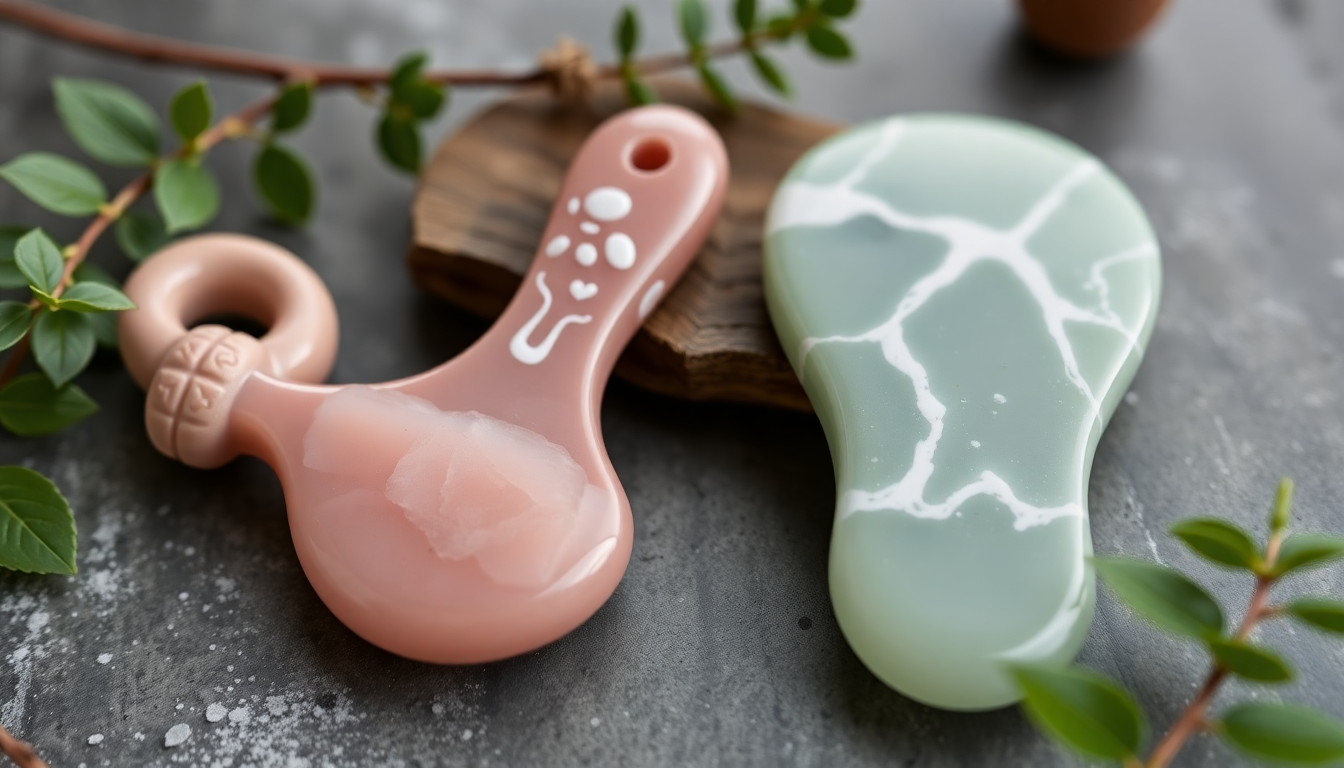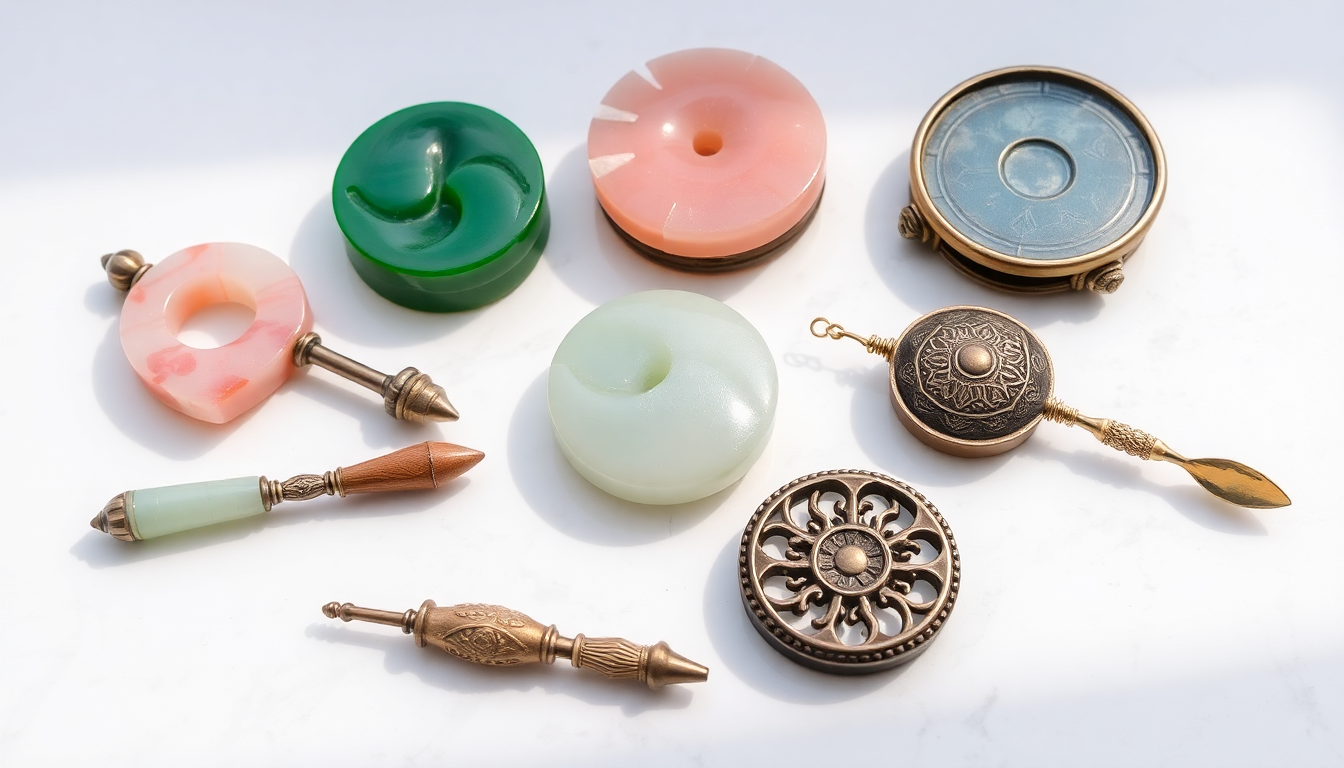Introduction
Gua sha has moved from traditional medicine into mainstream skincare because it can promote lymphatic drainage, reduce puffiness, and improve facial contour when performed correctly. However, incorrect technique, poor-quality tools, or too much pressure can cause bruising and broken capillaries. This extended guide gives you a comprehensive gua sha safety checklist and step-by-step routines for face and body, compares materials (jade vs rose quartz vs ergonomic designs like Lova Body gua sha), and shows how to maximize lymphatic drainage without bruising.
Why Focus on Lymphatic Drainage?
The lymphatic system removes interstitial fluid, cellular waste, and immune cells from tissues. Facial lymphatic drainage helps reduce fluid accumulation (puffiness), supports clearer skin, and can make features appear more defined. Gua sha, when used along lymph pathways and with gentle pressure, helps move fluid toward lymph nodes so the body can process and eliminate excess fluid.
How Bruising Happens and How to Prevent It
Bruising results from capillary rupture beneath the skin caused by excessive shearing force or blunt trauma. Key preventative measures include using the right tool, maintaining a shallow angle (about 150), using adequate lubricant, and applying light, consistent pressure. A polished and properly shaped tool distributes pressure evenly and reduces the risk of micro-tears that lead to bruising.
Core Gua Sha Safety Checklist
- Material: Choose natural or high-quality engineered stone with consistent polish; avoid rough or porous materials.
- Edges: Check for rounded, smooth edges with no chips or hairline cracks.
- Weight & Balance: A tool should feel comfortable and stable in your hand to avoid unintentional heavy pressure.
- Finish: High-gloss or satin polish reduces friction.
- Shape: Multiple contours for jaw, cheek, brow, under-eye, and body areas help you work safely.
- Sanitation: Non-porous surfaces that can be cleaned with soap and alcohol are safer for skin health.
- Technique: Keep the tool at a shallow angle, glide toward lymph nodes, and never press through pain.
- Frequency: Tailor sessions to your skin sensitivity (24x/week typical for most people).
- Medical Considerations: Avoid if you have clotting disorders, open wounds, or are on blood thinners without medical clearance.
Comparing Materials and Designs: Jade, Rose Quartz & Lova Body
Not all gua sha tools are created equal. Heres a detailed look at common materials and designer tools engineered for safety:
-
Jade
- Pros: Traditional, naturally cool sensation, generally lightweight.
- Cons: Market contains dyed or composite "jade"—quality varies; verify vendor transparency.
- Ideal use: Gentle facial lymphatic drainage and daily maintenance.
-
Rose Quartz
- Pros: Very smooth and slightly denser, visually appealing.
- Cons: Heavier tools can cause users to apply more pressure; ensure polish and rounded edges.
- Ideal use: Users who prefer a luxurious feel and can maintain light pressure.
-
Lova Body (Ergonomic Designer Tools)
- Pros: Shapes designed specifically for lymphatic pathways and ergonomics; quality-controlled polish reduces chip risk; practical shapes for both face and body. See Lova Body gua sha.
- Cons: Higher price point compared to generic stones—but often better long-term value because of durability and safety.
- Ideal use: Anyone serious about lymphatic drainage and longevity of a tools performance.



Detailed Buying Guide: What to Look for When Choosing a Gua Sha
When shopping for the best gua sha tool, evaluate these attributes in person if possible or check high-resolution photos and customer reviews:
- Authenticity & Source: Ask about stone origin; reputable sellers disclose sourcing and stone treatment (dyed vs natural).
- Surface & Polish: Surface should be uninterrupted and glass-smooth. Run your thumb along edges to detect any roughness.
- Shape Variety: A multi-contour tool lets you use a single stone on jaw, cheek, brow, and body safely.
- Weight Preferences: Lighter tools can be safer for beginners; heavier tools can feel more luxurious but risk heavier strokes.
- Price & Warranty: Invest in a quality piece with guarantees; lower-cost stones often sacrifice polish and finish.
- Brand Reputation: Choose brands with clear product care instructions and responsiveness—example: Lova Body.
Step-by-Step Facial Lymphatic Drainage Routine (Beginner-Friendly)
Performing a consistent routine will yield the best results and minimize risk of bruising. Each step emphasizes gentle pressure and precise stroke direction.
- Cleanse: Remove makeup and impurities. Start with a clean canvas.
- Lubricate: Apply 3 drops of facial oil or a hydrating serum to ensure the tool glides—this reduces friction and risk of micro-tears (key to avoiding bruises).
- Open the Lymph Drainage Pathways (Neck): With light pressure, stroke down from under the earlobe to the collarbone 60 times on each side.
- Jawline: Use the tools longer edge at a 15 degree angle; sweep from chin toward the ear 60 times each side.
- Cheeks: Short, repeated strokes from the nose outward to the ear. Keep strokes gentle and short to encourage fluid movement.
- Under-eyes: Use the curved corner with feather-light pressure. Do 3 passes—avoid overworking fragile skin.
- Brow & Forehead: Glide from the center of the forehead outward and up, then sweep down toward the temple nodes.
- Finish: Repeat neck sweeps toward the collarbone to move fluid out of the face.

Advanced Techniques & Tool-Specific Tips
- For Jade: Because jade is often lighter, maintain a consistent hand to avoid sudden heavy pressure. Jades cooling effect can be helpful for morning puffiness.
- For Rose Quartz: Use extra caution with pressure because of denser weight; rely on more passes with very light strokes rather than heavy single strokes.
- For Lova Body ergonomic shapes: Use the specific contours for targeted areas (small curves for under-eye, long edges for cheeks and body). These shapes are designed to follow lymphatic pathways and minimize abrupt pressure points.
- For Body Gua Sha: Use a larger tool with gentle long strokes toward regional lymph nodes. Use more lubricant or massage oil to avoid friction on the larger surface area.
Common Mistakes and How to Fix Them
- Too Much Pressure: If you see rapid purple discoloration or feel pain, stop. Reduce pressure and increase lubricant.
- Insufficient Lubrication: Causes tugging and micro-tears. Apply more oil and reattempt light strokes.
- Wrong Angle: A vertical tool increases shearing. Hold at a shallow angle (15 degrees) to the skin.
- Poor Tool Quality: Chipped or rough tools will damage the skin. Replace damaged stones immediately.
Clinical Evidence & What Research Says
Clinical evidence for gua sha is growing. Studies show gua sha can increase microcirculation and transient blood flow to treated areas, support soft tissue mobility, and reduce pain in certain contexts. For lymphatic drainage specifically, outcomes vary by technique and practitioner skill—controlled, gentle stroke direction toward lymph nodes is the consistent factor linked to reduced puffiness. While more large-scale randomized trials are needed, current evidence supports cautious, technique-focused use for cosmetic lymphatic benefit.
Practical Troubleshooting: If You Bruise
- Stop gua sha on the bruised area for several days.
- Apply cold compresses immediately after noticing a bruise to reduce swelling.
- Switch to gentler tools and lighter strokes; consider shorter sessions.
- If bruising is frequent, consult a dermatologist or clinician to rule out clotting issues.
Maintenance & Cleaning: Keep Your Tool Safe
- After each use, wash with warm water and mild soap; dry with a soft cloth.
- Disinfect occasionally with 70% isopropyl alcohol, especially if multiple people use the tool.
- Store in a padded pouch and avoid dropping stones on hard surfaces.
- Inspect regularly for chips or cracks and replace if damaged.
Price Range & Where to Buy: Smart Shopping Tips
Gua sha tools range widely in price. Budget stones under $10 can be tempting but often lack polish and quality control, increasing bruise risk. Mid-range tools ($200) can offer decent polish, while premium designer tools ($40+) typically include ergonomic design and better finish. Always read reviews that mention edge finish and solidity. For ergonomic and tested designs, see the curated selection at Lova Body, which emphasizes safety and lymphatic-friendly shapes.
DIY vs Professional Gua Sha
- DIY: Great for daily maintenance and gentle lymphatic work; less expensive and convenient. Best with a high-quality tool and adherence to safety checklist.
- Professional: Consider periodic sessions with a trained therapist for deeper work, posture-related tension, or if you want targeted treatment for specific concerns. Professionals can safely perform more intensive techniques that are not appropriate for home use.
Expanded FAQ
- Does gua sha work for lymphatic drainage? Many users report reduced puffiness and improved facial contour. Effectiveness depends on correct technique, consistent use, and using the right tool.
- How often should I use gua sha? Start 2x/week with light pressure. If well tolerated, you can increase frequency to daily sessions with minimal pressure.
- Can gua sha cause long-term damage? Not if performed with proper technique, a clean, intact tool, and appropriate frequency. Repeated heavy pressure or using damaged tools can cause capillary damage.
- Which gua sha tools are best for the face? Tools with multiple curves and a small contour for under-eye areas are ideal. Look for references like "best gua sha tool" and "gua sha tools face" when shopping; quality brands such as Lova Body focus on these details.
- What about "jade guasha tool" or "rose quartz" searches? Both can be effective; the important elements are finish, shape, and how you use the tool. Avoid poorly finished stones regardless of material.
Expert Tips to Maximize Results Without Bruising
- Always warm the tool slightly in your hands for comfort—avoid extremes of temperature.
- Use short, repeat strokes rather than single heavy passes.
- Start at the neck to clear the exit pathways before working the face.
- Pay attention to skin feedback: persistent redness shifting to purple indicates too much pressure.
- Combine gua sha with a skincare routine: hydration, sun protection, and gentle exfoliation support healthier results.
Case Examples: Typical Routines for Different Goals
- Morning De-Puff (5 minutes): Lightweight oil, neck sweeps, under-eye feathering, jawline and cheek sweeps toward lymph nodes.
- Evening Contour (10 minutes): Slightly longer routine including forehead sweeps, jawline definition, and slow cheek work with more passes toward the ears and down the neck.
- Body Lymphatic Session (150 minutes): Use a larger tool, more oil, and long strokes toward groin or axillary lymph nodes; avoid heavy pressure on inflamed areas.
Conclusion & Call to Action
Choosing the best gua sha tool and using it with a safety-first mindset is essential to maximize lymphatic drainage and avoid bruising. Inspect tools for smooth polish, rounded edges, and ergonomic contours. Whether you prefer the traditional feel of a jade guasha tool, the luxe weight of rose quartz, or the engineered shapes of modern designers, prioritize finish and technique.
If youre looking for a reliable, well-polished, lymphatic-friendly option, explore the Lova Body gua sha collection. Their designs are crafted with lymphatic pathways in mind and are a great choice for anyone who wants a high-quality gua sha tool that minimizes bruising risk. Ready to upgrade your routine? Visit Lova Body to shop the best gua sha tools, view detailed shape guides, and pick the stone and size that suits your needs.
Disclaimer: This article provides general information and is not medical advice. If you have specific medical concerns—especially clotting disorders, use of blood thinners, skin conditions, or recent surgeries—consult a healthcare professional before using gua sha.




Lasă un comentariu
Acest site este protejat de hCaptcha și hCaptcha. Se aplică Politica de confidențialitate și Condițiile de furnizare a serviciului.